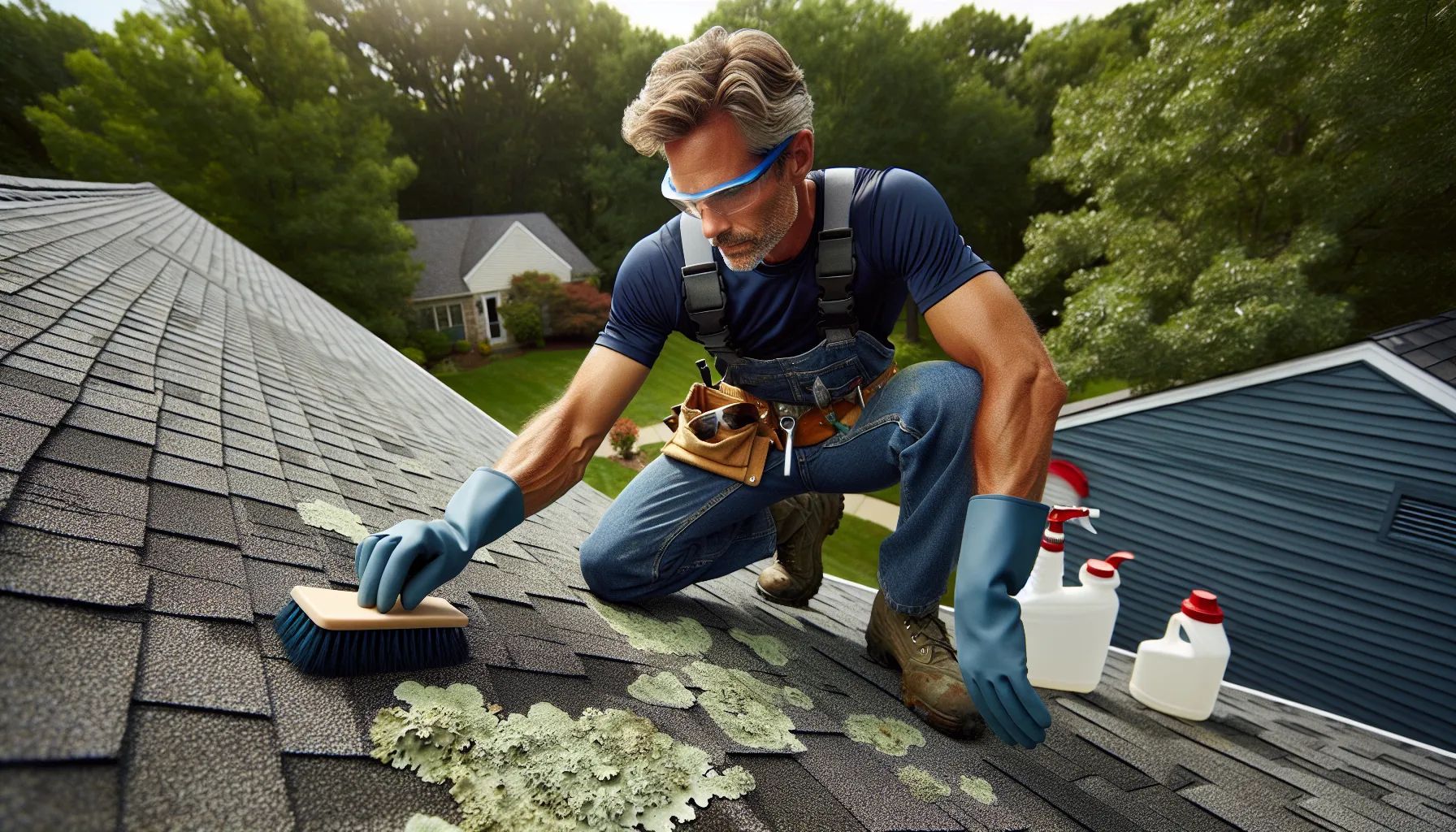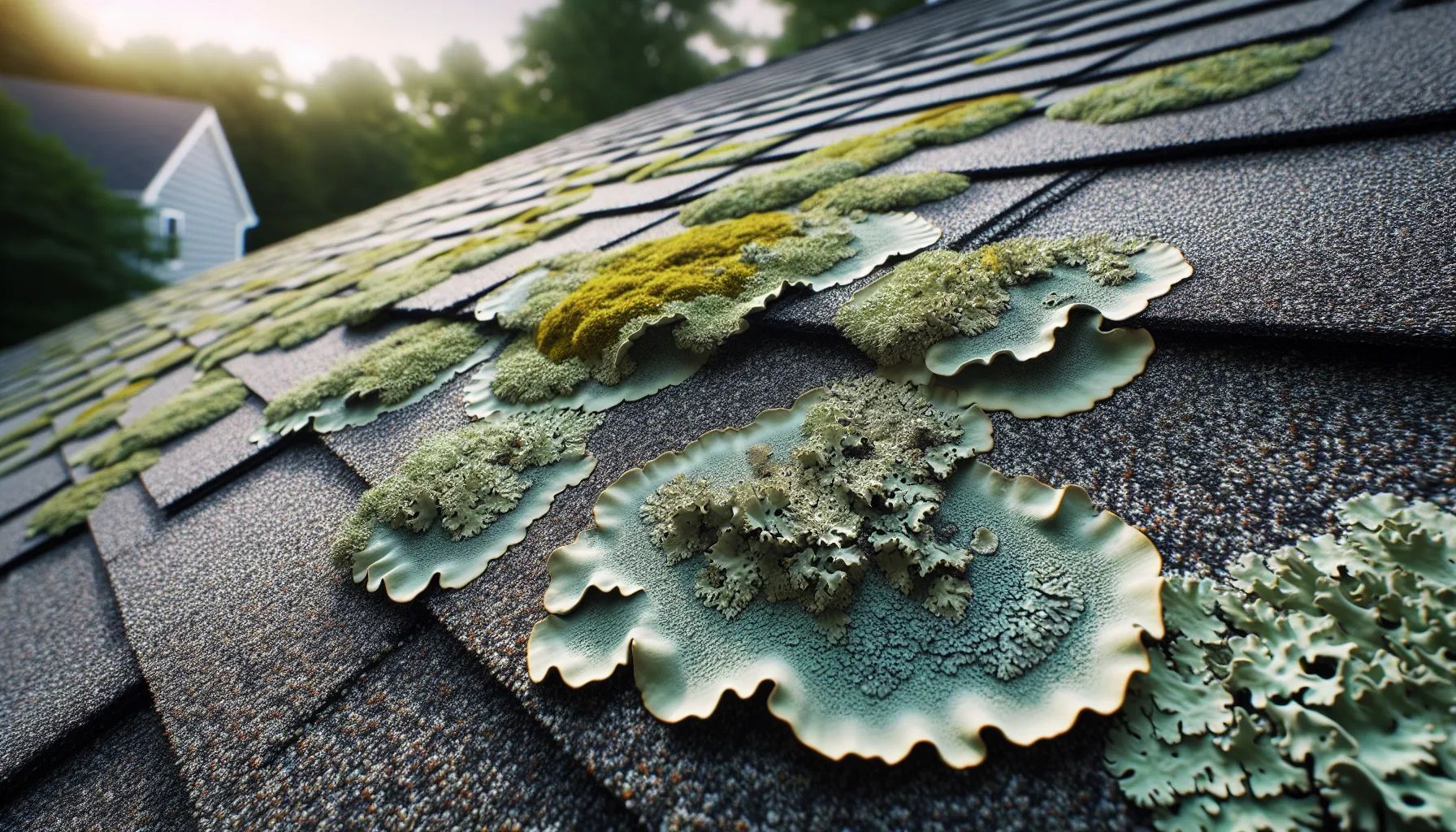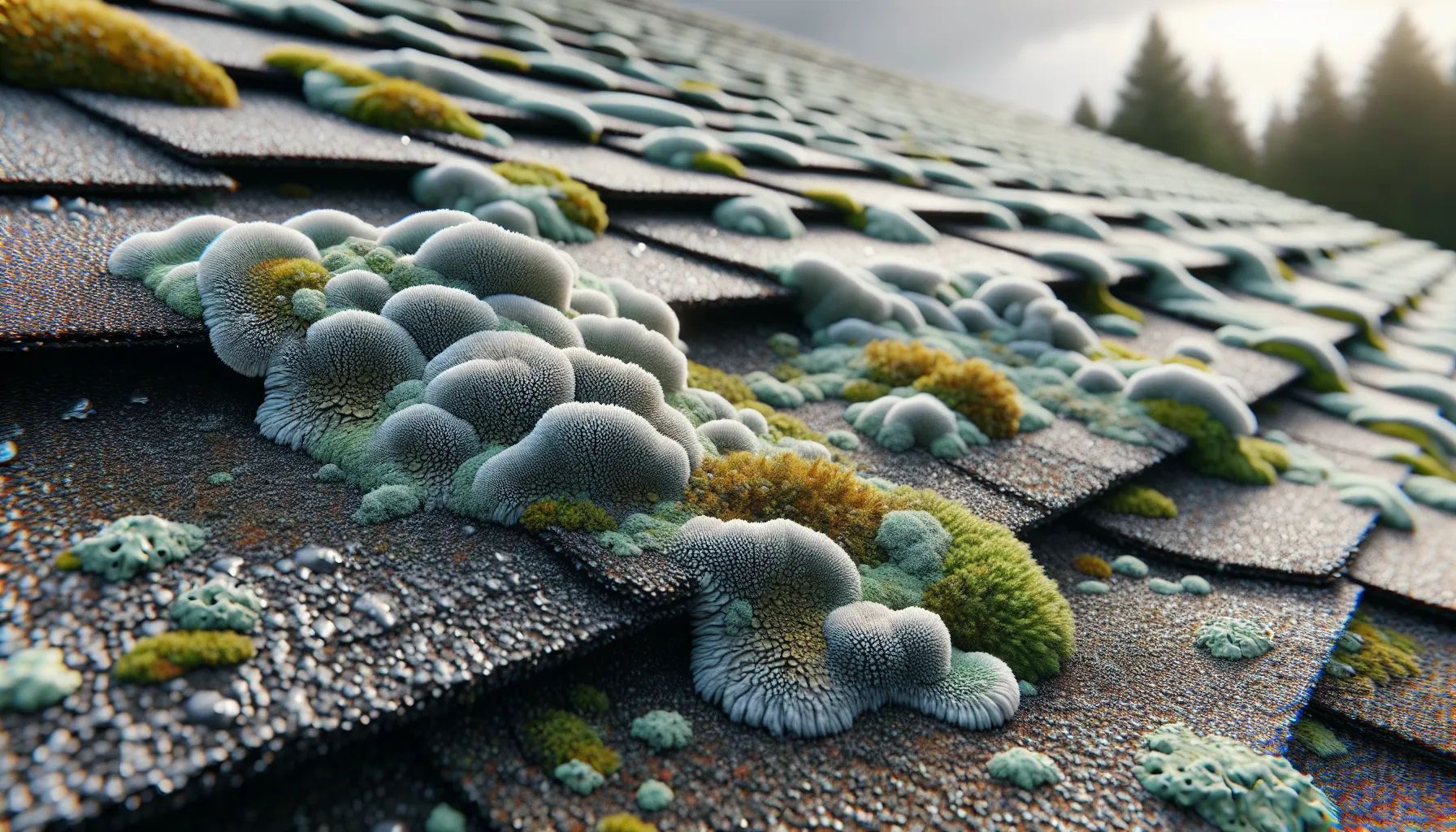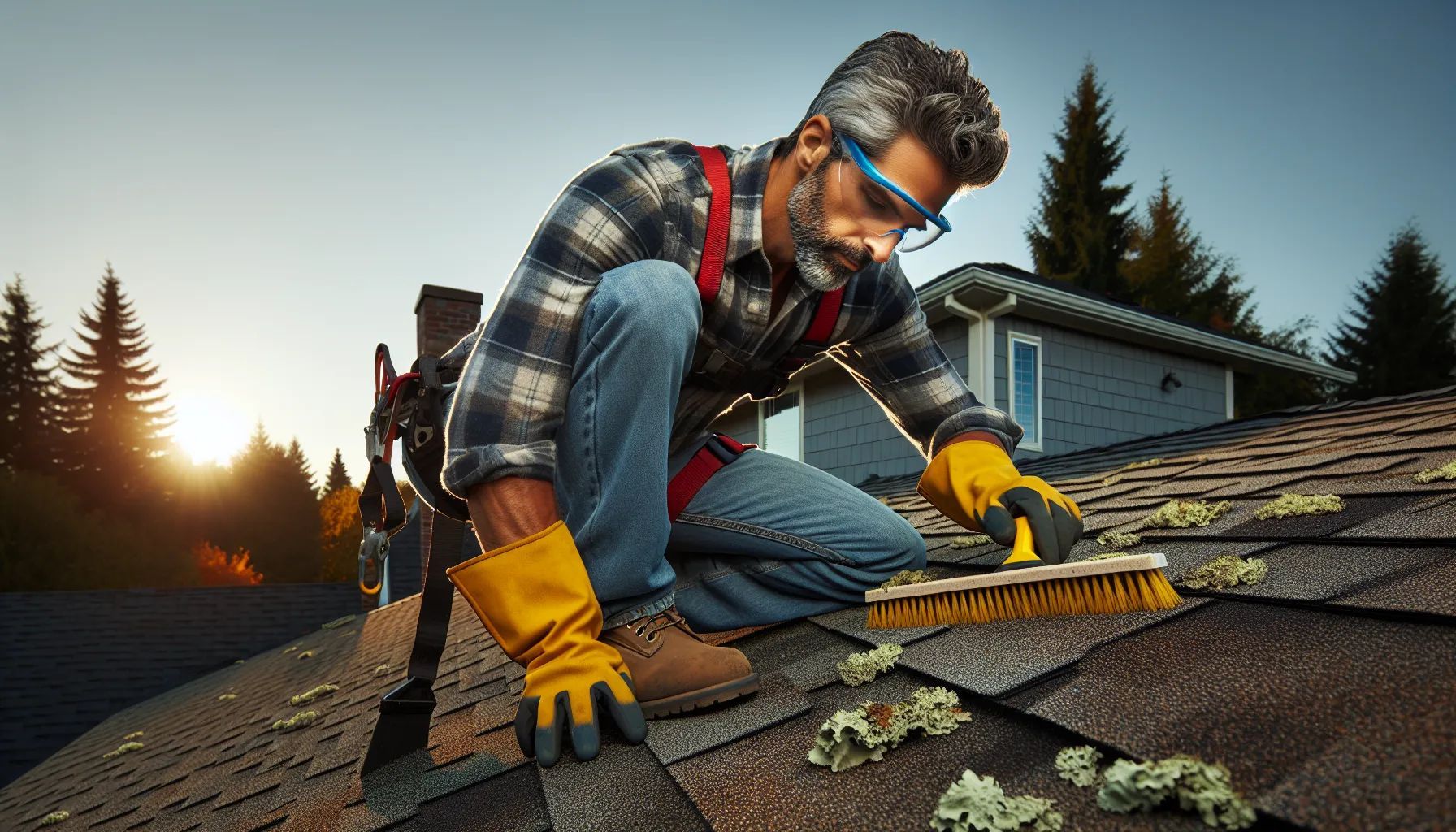Lichen Removal on Roof: Complete Guide to Cleaning and Prevention

Lichen removal on roof surfaces is a critical maintenance task that many homeowners overlook until significant damage occurs. These greenish-gray, crusty organisms aren't just unsightly, they actively harm your roofing materials by embedding into shingles and creating pathways for moisture. We've seen countless roofs age prematurely because property owners didn't understand what lichen actually is or why it poses such a threat. Unlike simple algae stains or soft moss growth, lichen forms a tight bond with your roof that requires specific removal techniques and preventive measures. In this guide, we'll walk you through everything you need to know about identifying, removing, and preventing lichen growth before it compromises your roof's integrity.
Understanding Lichen Growth on Roofs

What Is Lichen and Why Does It Grow on Roofs?
Lichen is a symbiotic organism composed of fungi and algae or cyanobacteria living together. This partnership allows lichen to survive in harsh conditions where neither organism could thrive alone. The fungal component provides structure and moisture retention, while the algae or cyanobacteria perform photosynthesis to create nutrients.
On roofs, lichen appears as flat, crusty patches ranging from green-gray to yellowish colors. It prefers moist, shaded environments where air circulation is limited. North-facing roof sections, areas under tree canopies, and spots that rarely receive direct sunlight create ideal conditions for lichen establishment. Once lichen takes hold, the fungal portion sends root-like structures called rhizines into the roofing material's surface, anchoring itself firmly.
These conditions explain why some roofs develop lichen problems while neighboring properties remain clear. We've noticed that homes surrounded by mature trees or located in humid climates face higher lichen colonization rates.
The Difference Between Lichen, Moss, and Algae
Many homeowners confuse lichen with moss or algae, but these organisms differ significantly in structure, appearance, and the damage they cause. Understanding these differences helps you choose the right removal method.
Lichen grows as flat, crusty formations that adhere tightly to roof surfaces. It may appear green-gray or yellow and feels rough to the touch. The fungal roots penetrate roofing materials, making lichen the most difficult of the three to remove.
Moss forms soft, green, spongy mats that retain significant moisture. It grows thicker than lichen and can lift shingle edges as it expands. Moss creates ideal conditions for rot and leaks by holding water against roofing materials.
Algae appears as slimy, dark streaks, typically green or black. It's the least structurally damaging of the three but still detracts from your home's appearance. Algae grows quickly in humid conditions and often shows up as vertical staining patterns.
We've found that roofs frequently harbor all three organisms simultaneously, with each requiring slightly different treatment approaches. Proper identification ensures you don't waste time with ineffective cleaning methods.
Why You Should Remove Lichen From Your Roof

Potential Damage to Roofing Materials
Lichen causes serious structural damage through its fungal root system. These rhizines penetrate the protective granule layer of asphalt shingles, creating microscopic channels that allow moisture infiltration. Over time, this process lifts shingle edges and breaks down the asphalt binder that holds granules in place.
The damage accelerates during freeze-thaw cycles. Water absorbed by lichen expands when frozen, forcing roofing materials apart. We've seen shingles curl, crack, and become brittle years before their expected lifespan due to persistent lichen growth.
Lichen also retains moisture against roof surfaces long after rain stops. This constant dampness promotes wood rot in underlying decking and creates conditions favorable for mold growth in attics. The combination of physical penetration and moisture retention makes lichen one of the most destructive biological threats to residential roofing.
Impact on Roof Lifespan and Aesthetics
A lichen-covered roof can lose 5-10 years of functional life compared to a clean, well-maintained roof. The granules that protect asphalt shingles from UV damage deteriorate faster when lichen is present, exposing the asphalt beneath to accelerated weathering.
From an aesthetic standpoint, lichen creates an aged, neglected appearance that significantly reduces curb appeal. Potential buyers often interpret lichen growth as a sign of deferred maintenance or underlying structural problems. We've worked with real estate agents who estimate that visible lichen growth can reduce a home's market value by thousands of dollars.
The staining lichen leaves behind persists even after the organism dies, requiring thorough cleaning to restore the roof's original appearance. This discoloration often extends beyond the lichen's physical boundaries as rainwater carries organic material down the roof slope.
Safe and Effective Lichen Removal Methods

Manual Removal Techniques
Manual removal works well for light to moderate lichen infestations and poses the least risk to roofing materials. We recommend using a soft-bristled brush or broom specifically designed for roof cleaning. The key is working gently from the top of the roof downward, following the natural direction of shingle overlap.
Start by loosening dried lichen with light, sweeping motions rather than aggressive scrubbing. Apply minimal pressure to avoid lifting shingle edges or dislodging protective granules. For stubborn areas, allow a cleaning solution to penetrate the lichen first, making manual removal easier.
Never use wire brushes, scrapers, or tools that might gouge roofing materials. We've seen homeowners cause more damage during overly aggressive cleaning than the lichen itself would have caused. Patience and repeated gentle passes produce better results than forceful scrubbing.
Manual removal requires proper safety equipment including non-slip footwear, a safety harness, and a stable ladder with standoff brackets to protect gutters.
Chemical Treatments for Lichen Removal
Chemical treatments penetrate lichen's structure and kill both the fungal and algal components. Products like Wet & Forget offer gentle yet effective cleaning that works over several weeks as rain activates the formula. These cleaners break down lichen without aggressive scrubbing.
Bleach solutions (mixed 1:1 with water) provide faster results but require more care during application. Bleach kills lichen on contact and helps remove staining. But, you must thoroughly rinse bleach solutions to protect landscaping plants and prevent potential damage to certain roofing materials.
Eco-friendly vinegar-based solutions offer a less harsh alternative, though they typically require longer contact times and multiple applications for complete lichen removal. We've found white vinegar (5% acetic acid) effective for light lichen growth when applied on warm, sunny days.
Regardless of which chemical you choose, apply treatments on cool, cloudy days to prevent rapid evaporation. Ensure thorough coverage of affected areas and follow manufacturer recommendations for dwell time before rinsing.
Pressure Washing: Pros and Cons
Pressure washing remains controversial for roof cleaning, and we generally advise against it for most residential shingle roofs. High-pressure water streams can dislodge protective granules, force water under shingles, and void manufacturer warranties.
The primary advantage of pressure washing is speed, it removes lichen and staining quickly with less manual labor. For certain hard surfaces like slate or concrete tile, pressure washing (when done correctly with appropriate nozzles and pressure settings) can be safe and effective.
But, the risks often outweigh the benefits. We've inspected numerous roofs damaged by improper pressure washing, including blown-off shingles, destroyed flashing seals, and accelerated granule loss. Most roofing manufacturers explicitly prohibit pressure washing in their warranty terms.
If you decide pressure washing is necessary, use the lowest effective pressure (never exceeding 1,500 PSI for asphalt shingles), keep the nozzle at least 12 inches from the surface, and spray downward at a shallow angle. Better yet, consider soft washing, a low-pressure application method that relies on cleaning solutions rather than water force.
Step-by-Step Guide to Removing Lichen From Your Roof
We've refined this process through years of experience to maximize effectiveness while minimizing risk to both you and your roof.
- First, gather your safety equipment: non-slip shoes, safety harness, stable extension ladder, and protective gear including gloves and eye protection. Check weather forecasts and choose a cool, cloudy day when no rain is expected for at least 24 hours.
- Second, clear loose debris from the roof using a leaf blower or soft broom. Remove branches, leaves, and other organic material that might interfere with cleaning solution contact.
- Third, prepare your cleaning solution. Mix your chosen lichen remover according to manufacturer instructions, or create a 1:1 bleach-water solution in a pump sprayer. For eco-friendly alternatives, use undiluted white vinegar.
- Fourth, apply the solution generously to all lichen-affected areas, working from the bottom up to prevent solution from running over untreated sections. Ensure thorough saturation, lichen's crusty structure resists initial penetration.
- Fifth, allow the solution to dwell for 15-20 minutes. Don't let it dry completely: reapply if necessary to keep surfaces moist. This dwell time allows the chemicals to penetrate and break down lichen's structure.
- Sixth, use a soft-bristled brush to gently scrub treated areas. Work from the roof's peak downward, using light pressure and following the direction of shingle overlap. Stubborn lichen may require a second application and additional dwell time rather than harder scrubbing.
- Finally, rinse thoroughly from top to bottom using a garden hose with moderate water pressure. Ensure all cleaning solution and loosened lichen particles wash away completely. Pay special attention to gutters and downspouts, as debris can cause clogs.
Inspect your work after the roof dries. Some staining may remain after the first treatment, requiring a second application for complete removal.
Preventing Lichen Regrowth on Your Roof
Zinc or Copper Strips Installation
Metal strips offer long-term lichen prevention through continuous chemical protection. Zinc and copper strips installed along the roof ridge release metal ions when rain washes over them. These ions flow down the roof surface, creating an environment hostile to lichen, moss, and algae growth.
We typically install zinc strips because they're cost-effective and highly durable. Position strips approximately 2-3 inches below the ridge cap, securing them with roofing nails or adhesive. Each strip should be 2-3 inches wide, and you'll need enough to span the entire ridge length.
Copper strips work similarly but cost more. But, copper releases ions more readily and provides slightly better protection in heavily shaded areas. Some homeowners prefer copper for its aesthetic appearance as it develops a distinctive patina.
For maximum effectiveness, install strips within a year of roof cleaning, while surfaces remain relatively clear. The metal ions prevent new lichen establishment but won't remove existing growth. We've observed that properly installed zinc strips can keep roofs lichen-free for 10-15 years or longer.
One often-overlooked detail: ensure good metal-to-shingle contact. Gaps prevent proper ion distribution and create protection gaps where lichen can establish.
Regular Maintenance and Cleaning Schedules
Consistent maintenance prevents minor lichen presence from becoming a major infestation. We recommend inspecting your roof twice yearly, once in spring and again in fall. Look for early-stage lichen growth, which appears as small, flat spots that are easier to remove than established colonies.
Sweep or blow off accumulated leaves, pine needles, and other organic debris at least quarterly. This material retains moisture and provides nutrients that accelerate lichen growth. Pay particular attention to valleys, around chimneys, and along the roof's lower edges where debris accumulates.
Trim overhanging tree branches to increase sunlight exposure and improve air circulation. We suggest maintaining at least 6-8 feet of clearance between branches and the roof surface. This spacing reduces shade, speeds drying after rain, and limits the organic debris that falls onto your roof.
Apply preventive treatments annually in areas prone to lichen growth. A light application of diluted lichen-prevention solution or eco-friendly roof cleaner discourages colonization without requiring intensive scrubbing.
Document your maintenance activities with photos and dates. This record helps you identify problem areas that require additional attention and provides valuable information if you later need professional assistance or file warranty claims.
When to Hire a Professional Roof Cleaner
Some situations call for professional expertise rather than DIY efforts. We recommend hiring professionals when your roof pitch exceeds 6:12 (6 inches of rise per 12 inches of horizontal run). Steep roofs present serious fall risks that justify the cost of professional service.
Extensive lichen coverage, more than 25-30% of the roof surface, typically requires commercial-grade equipment and cleaners that aren't readily available to homeowners. Professionals can treat large areas efficiently and have the experience to identify underlying damage that might need repair.
Fragile roofing materials like slate, clay tile, or aged cedar shakes require specialized handling. These materials can crack or break under improper cleaning pressure. Professional roof cleaners understand the specific requirements of different roofing materials and adjust their methods accordingly.
If you've attempted DIY removal and lichen returns within a year, professional assessment can identify contributing factors you might have missed. Persistent regrowth often indicates drainage problems, excessive shade, or inadequate preventive measures that professionals can diagnose and correct.
Safety concerns should always take priority. If you're uncomfortable working at heights, lack proper safety equipment, or have physical limitations, hiring professionals is the responsible choice. The cost of professional cleaning is minimal compared to medical expenses from a fall or repairs needed after improper DIY attempts.
When selecting a professional, verify they're insured and avoid companies that rely primarily on pressure washing. Ask about their cleaning methods, products used, and whether they offer prevention services like zinc strip installation.
Conclusion
We've covered the essential knowledge you need for effective lichen removal and prevention. Lichen poses a genuine threat to roof longevity through its penetrating root system and moisture retention, but you can manage it successfully with the right approach. Manual removal combined with appropriate chemical treatments provides safe, effective results for most residential roofs, while pressure washing should be reserved for specific hard surfaces or left to experienced professionals.
The prevention strategies we outlined, particularly zinc or copper strip installation and regular maintenance schedules, will save you significant time and money compared to repeatedly treating active infestations. Remember that lichen thrives in specific conditions, and modifying those conditions through improved sunlight exposure and air circulation addresses the root cause rather than just the symptoms.
Whether you tackle lichen removal yourself or hire professionals, act promptly when you notice growth beginning. Early intervention prevents the extensive damage and costly repairs that result from years of neglect. Your roof represents a substantial investment in your home's protection and value, keeping it free from lichen ensures that investment delivers its full expected lifespan.
What is lichen on a roof and why is it harmful?
Lichen is a crusty organism formed by fungi and algae living together. It harms roofs by sending root-like structures into shingles, creating moisture pathways that cause premature aging, cracking, and can reduce roof lifespan by 5-10 years.
How do you remove lichen from roof shingles safely?
Use a soft-bristled brush with gentle sweeping motions from top to bottom. Apply a lichen-removal solution, let it dwell for 15-20 minutes, then gently scrub and rinse thoroughly. Avoid aggressive scrubbing or pressure washing to prevent shingle damage.
What's the difference between lichen and moss on a roof?
Lichen forms flat, crusty patches that bond tightly to shingles with penetrating roots, while moss grows as thick, spongy mats that retain moisture and can lift shingle edges. Lichen is harder to remove than moss due to its tight adhesion.
Can you use bleach to remove lichen from roof?
Yes, a 1:1 bleach-water solution effectively kills lichen on contact. Apply on cool, cloudy days, allow 15-20 minutes dwell time, then rinse thoroughly to protect landscaping. Bleach provides faster results than eco-friendly alternatives like vinegar.
How much does professional roof lichen removal cost?
Professional lichen removal typically costs between $300-$800 depending on roof size, pitch, and infestation severity. This investment is worthwhile for steep roofs, extensive coverage, or delicate materials like slate where DIY attempts risk injury or damage.
How do zinc strips prevent lichen growth on roofs?
Zinc strips installed along the roof ridge release metal ions when rain washes over them. These ions flow down the roof surface, creating an environment that prevents lichen, moss, and algae establishment for 10-15 years or longer.

